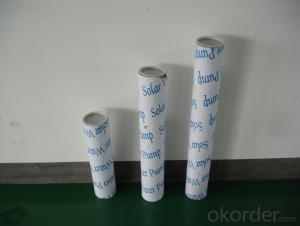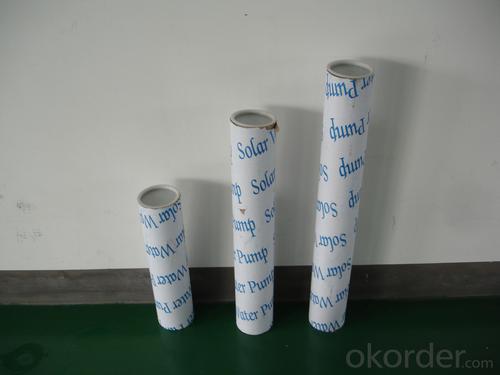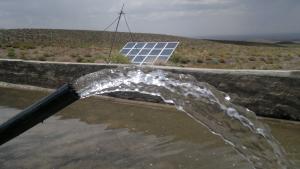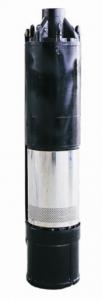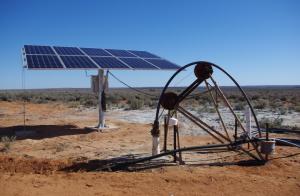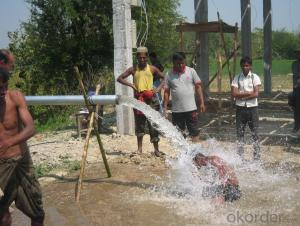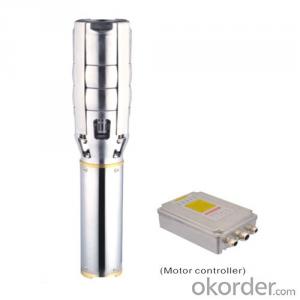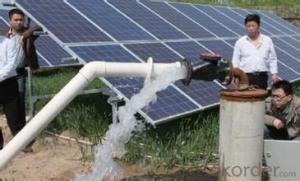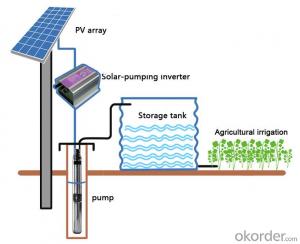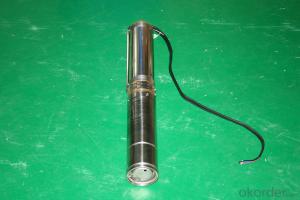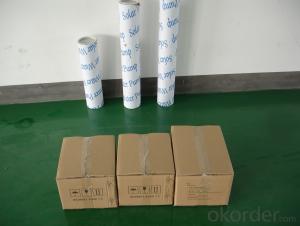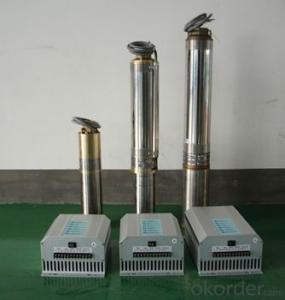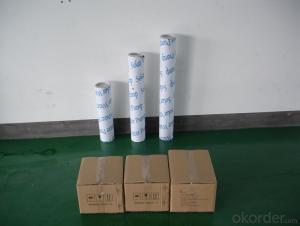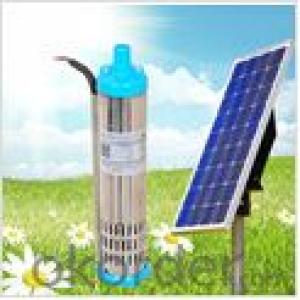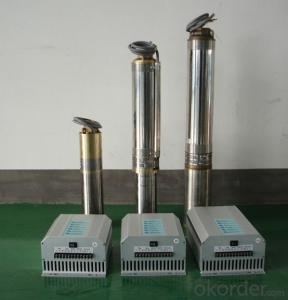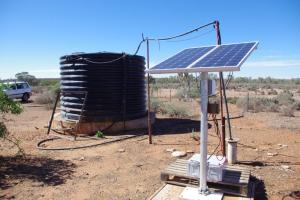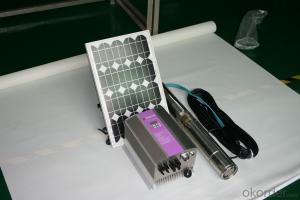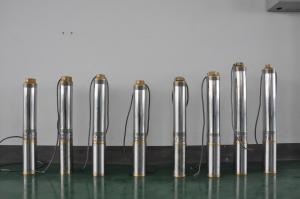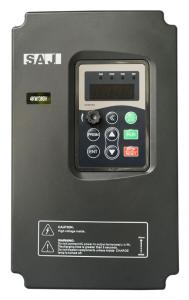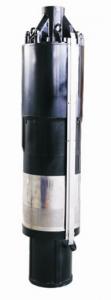Large Solar DC Submersible Pumps
- Loading Port:
- China Main Port
- Payment Terms:
- TT OR LC
- Min Order Qty:
- -
- Supply Capability:
- -
OKorder Service Pledge
OKorder Financial Service
You Might Also Like
Item Description :
This superb new addition to our solar fountain range comes with a 10w solar panel,and a powerful fountain pump that is capable of producing fountains of up to 2m in height. As well as being easy to set up and use.Instruction manual is supplied for assembly and maintenance.
Solar Fountain Key Features :
Powered by direct sunlight
No high voltage electric mains required
Safe for children
Max. height of fountain: 2M
Max. flow capacity: 800 L/H(176 GAL)
10W Polycrystalline solar panel included
18V DC brushless pump
Solar Pump Features :
Can produce fountains up to : 2M (tube height) 1.4M (fountain height)
Comes with multiple nozzle accessories
Cable Length : 5M
Solar Panel Features :
10W peak power.
Polycrystalline highly efficient solar panel
Comes mounted in aluminium frame
Comes with ground stake and rotating knob so you can angle your panel toward the sun
What You Will Get :
10W solar panel
Solar pump
Ground Sake
Nozzle accessories
Precautions :
DO NOT alter or change the product itself or its components
Operate pump in freshwater only, never above 50 degrees celsius
Keep away from flammable liquids
Do not connect to any other power supply other than the included
- Q: How does the size of the water storage tank affect the performance of a solar pump system?
- The performance of a solar pump system can be significantly affected by the size of the water storage tank. In a solar pump system, the water storage tank serves the primary purpose of storing water that is pumped by the solar pump during the day. This stored water can then be used during periods when there is no sunlight or when the pump is not operational. The size of the water storage tank directly impacts the availability of water during non-sunlight hours or when the pump is not running. A larger tank has a higher capacity to store water, ensuring a continuous water supply even during times of low or no sunlight. This becomes especially crucial in areas with inconsistent sunlight or where the pump needs to operate at night. Additionally, the size of the storage tank also affects the overall efficiency of the system. With a larger tank, more water can be stored, leading to reduced frequency of pump operation. This results in energy savings and prolongs the lifespan of the pump by minimizing wear and tear. Moreover, the size of the water storage tank plays a role in meeting peak water demands. If the tank is too small, it may not be able to store enough water to fulfill high demand periods, leading to temporary water shortages. Conversely, a larger tank can accommodate higher water demands, ensuring an uninterrupted water supply during peak usage. Therefore, it is crucial to carefully consider factors such as water requirements, availability of sunlight, and the frequency of pump operation when selecting the appropriate size of the water storage tank. A thorough assessment of these factors will help determine the optimal tank size, maximizing the performance and efficiency of the solar pump system.
- Q: How does the exposure to shade or obstructions affect the performance of a solar pump?
- The performance of a solar pump can be significantly affected by exposure to shade or obstructions. Solar pumps function by converting sunlight into electricity, which powers the pump. Therefore, any decrease in sunlight caused by shade or obstructions can directly impact the efficiency and output of the pump. When shade is present, whether from trees, buildings, or other structures, the amount of sunlight reaching the solar panels is reduced. This reduction in sunlight leads to a decrease in electricity generation by the panels. Consequently, the pump's performance may be compromised, resulting in reduced capacity or even complete failure. Similarly, obstructions like dust, dirt, or debris on the solar panels can impede sunlight absorption. These obstructions create a barrier between the sunlight and the panels, reducing the efficiency of solar energy conversion. As a result, the pump may experience decreased performance and may require more time to achieve the desired pumping capacity. It is important to note that the location and orientation of the solar panels also play a critical role in shade or obstruction exposure. Improper positioning or installation of the panels in areas with limited sunlight exposure will directly affect the pump's performance. To ensure optimal performance, it is crucial to install solar pumps in areas with maximum sunlight exposure, free from any potential shade or obstructions. Regular maintenance and cleaning of the solar panels can also help prevent the accumulation of dirt or debris that could hinder their efficiency. By taking these precautions, the solar pump can operate efficiently and effectively, providing a reliable and sustainable source of water pumping.
- Q: How does a solar pump handle water source pollution from agricultural activities?
- A solar pump itself does not directly handle water source pollution from agricultural activities. However, it can indirectly help mitigate pollution by providing a reliable and sustainable source of water for irrigation. By using solar energy to power the pump, it reduces dependence on fossil fuels and minimizes carbon emissions. This, in turn, contributes to reducing air and water pollution associated with conventional pump systems. Moreover, solar-powered pumps are often used in conjunction with drip irrigation systems, which can help optimize water usage and reduce the risk of contamination from excessive fertilizer or pesticide application. Overall, while a solar pump does not directly address water source pollution, it plays a role in promoting eco-friendly and efficient agricultural practices that can contribute to reducing pollution.
- Q: Can a solar pump be used for water features in a garden?
- Yes, a solar pump can be used for water features in a garden. Solar pumps are designed to run on solar energy, making them an eco-friendly and cost-effective option for powering water features such as fountains, ponds, or waterfalls in a garden. They harness sunlight to generate power, eliminating the need for traditional electricity sources and reducing energy costs. Additionally, solar pumps are easy to install and maintain, providing a sustainable solution for adding beauty and movement to any garden water feature.
- Q: Can solar pumps be used in areas with high temperature or extreme weather conditions?
- Yes, solar pumps can be used in areas with high temperatures or extreme weather conditions. They are designed to withstand a wide range of temperatures and can function efficiently even in hot climates. Additionally, solar pumps are often equipped with weatherproof and durable materials, making them suitable for extreme weather conditions such as heavy rain or strong winds.
- Q: Can a solar pump be used in areas with limited access to fuel for traditional pumps?
- Yes, a solar pump can be effectively used in areas with limited access to fuel for traditional pumps. Solar pumps operate solely on sunlight, converting solar energy into mechanical energy to pump water. They do not require any external fuel sources, making them a reliable and sustainable solution for remote locations where fuel may be scarce or expensive to transport. Solar pumps are increasingly being adopted in such areas to provide a cost-effective and environmentally friendly alternative for water pumping needs.
- Q: Can a solar pump be used for water supply in coffee plantations?
- Yes, a solar pump can be used for water supply in coffee plantations. Solar pumps are efficient and environmentally friendly alternatives to traditional pumps, as they utilize solar energy to power the pump and provide water for irrigation. This makes them well-suited for remote locations such as coffee plantations, where access to electricity may be limited. Additionally, solar pumps help reduce operating costs and dependency on fossil fuels, making them a sustainable solution for water supply in coffee plantations.
- Q: What is the expected efficiency of a solar pump system in converting solar energy to water pressure?
- The expected efficiency of a solar pump system in converting solar energy to water pressure can vary depending on various factors such as the type and quality of the solar panels, the design and efficiency of the pump system, and the environmental conditions where the system is installed. Generally, a well-designed and properly functioning solar pump system can achieve an efficiency of around 20% to 40% in converting solar energy to water pressure. This means that for every 100 units of solar energy received, the system can convert 20 to 40 units into water pressure. The efficiency of the solar panels plays a crucial role in determining the overall efficiency of the system. High-quality solar panels with a high conversion efficiency can maximize the utilization of solar energy and enhance the overall efficiency of the pump system. Additionally, the design and efficiency of the pump system itself are important factors. A well-designed system, including the selection of the appropriate pump type and size, can optimize the energy conversion process and improve efficiency. The use of energy-efficient motors and pumps can also contribute to higher overall efficiency. Environmental conditions also impact the efficiency of a solar pump system. Factors such as sunlight intensity, temperature, shading, and dust accumulation on the solar panels can affect the system's performance. Therefore, it is important to consider these factors during the design and installation of the system to maximize efficiency. Overall, while the expected efficiency of a solar pump system can vary, with the right design, equipment, and environmental conditions, it is possible to achieve a reasonably high efficiency in converting solar energy to water pressure.
- Q: What is the average cost of a solar pump?
- The average cost of a solar pump can vary depending on factors such as the capacity, brand, and installation requirements. However, a rough estimate suggests that a typical solar pump may cost anywhere from $1,500 to $5,000.
- Q: Can a solar pump be used in areas with high levels of air pollution?
- Yes, a solar pump can be used in areas with high levels of air pollution. Solar pumps are powered by sunlight and do not require any external fuel or electricity, which makes them suitable for use in areas with poor air quality. They operate independently of the surrounding air pollution levels and can continue to function effectively as long as they receive sufficient sunlight.
Send your message to us
Large Solar DC Submersible Pumps
- Loading Port:
- China Main Port
- Payment Terms:
- TT OR LC
- Min Order Qty:
- -
- Supply Capability:
- -
OKorder Service Pledge
OKorder Financial Service
Similar products
Hot products
Hot Searches
Related keywords
